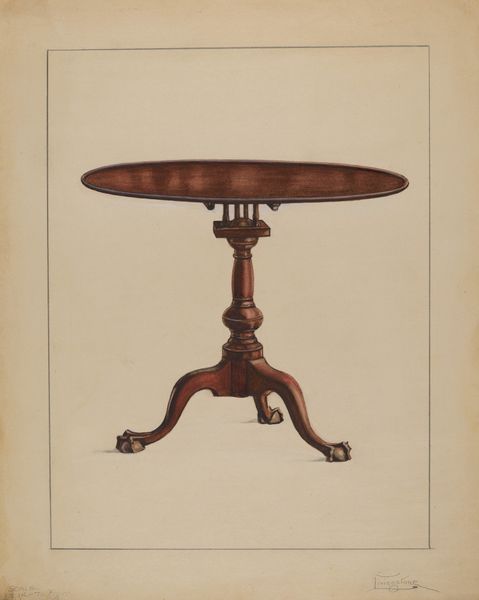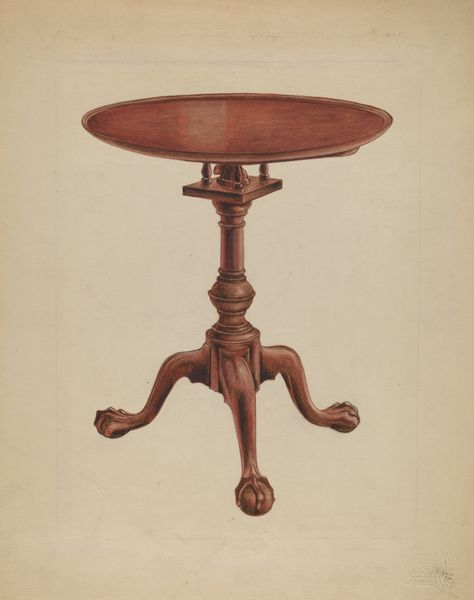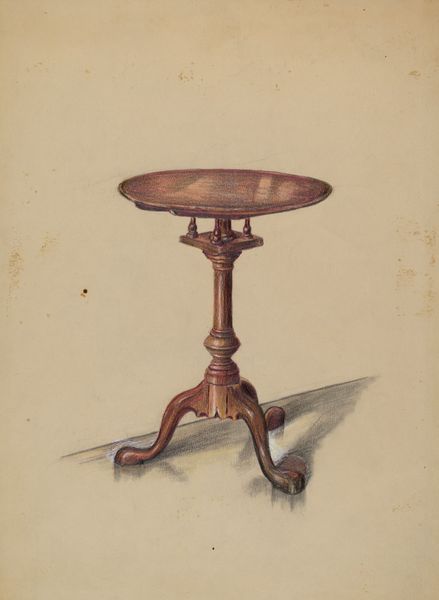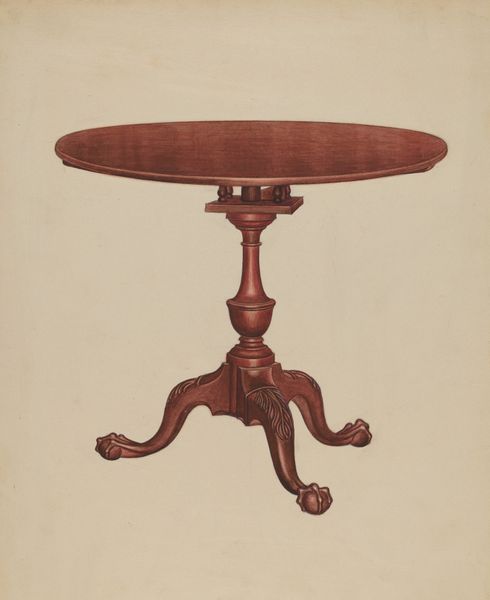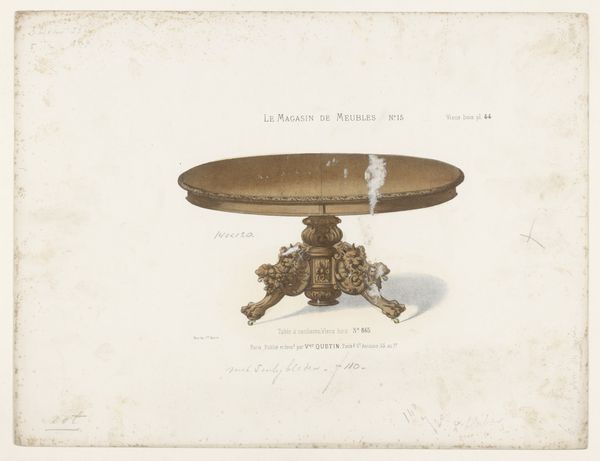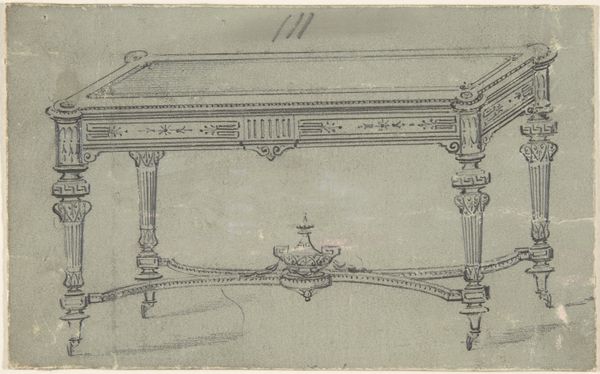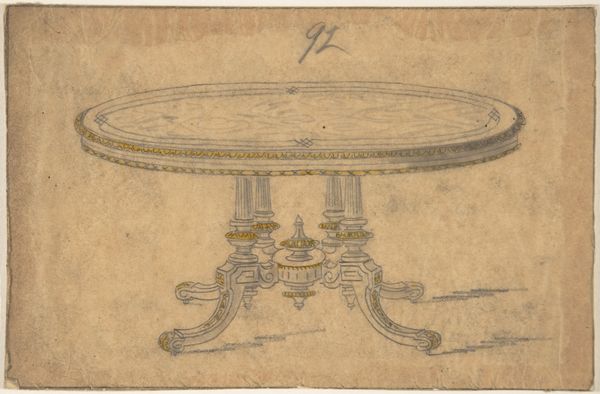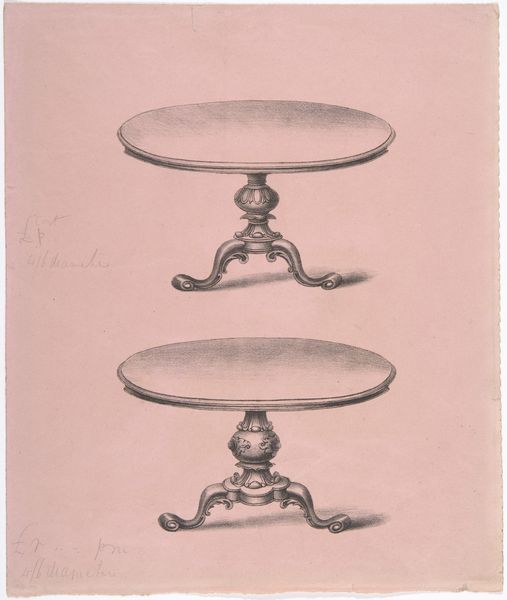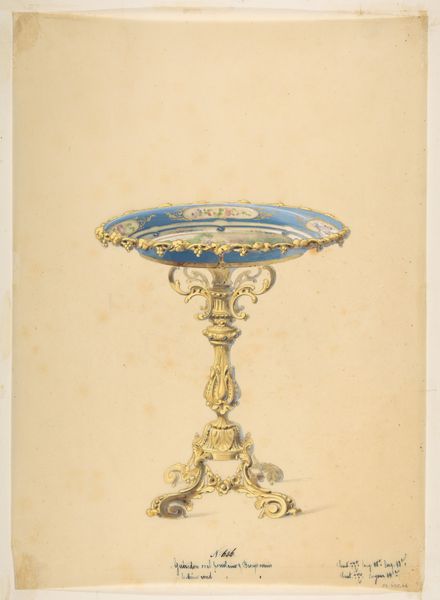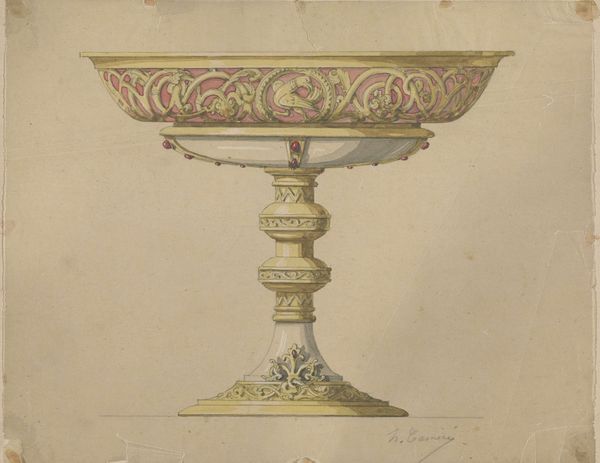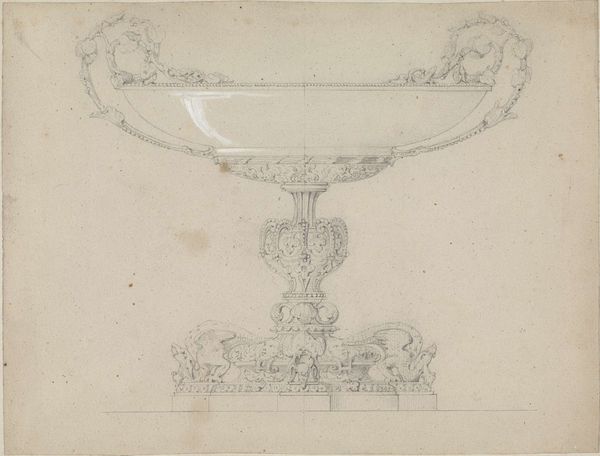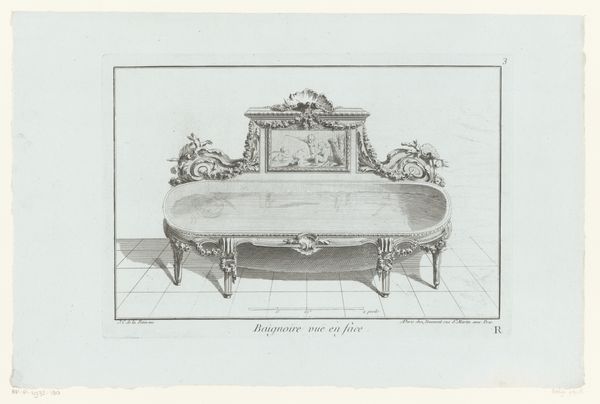
drawing, paper, pencil
#
drawing
#
pencil sketch
#
paper
#
pencil drawing
#
pencil
#
academic-art
Dimensions: height 109 mm, width 132 mm
Copyright: Rijks Museum: Open Domain
Henri Cameré sketched this design for a footed bowl with two boys as handles, using pencil and watercolor. The cherubic figures are precariously perched on either side of the bowl, their weight seemingly supported by the bowl's edge. In a time when art and design were heavily influenced by classical ideals, the incorporation of human figures, particularly idealized children, taps into themes of innocence and purity. One can’t help but wonder about the relationship between childhood and labor. Are the children functional, part of the bowl itself, or are they merely decorative, symbols of innocence adorning an object of luxury? The bowl, typically used for serving, becomes a stage where the roles of adornment, function, and the human form are subtly questioned. Cameré's design invites us to reflect on the weight we assign to aesthetics and the often-unseen labor that upholds it.
Comments
No comments
Be the first to comment and join the conversation on the ultimate creative platform.
